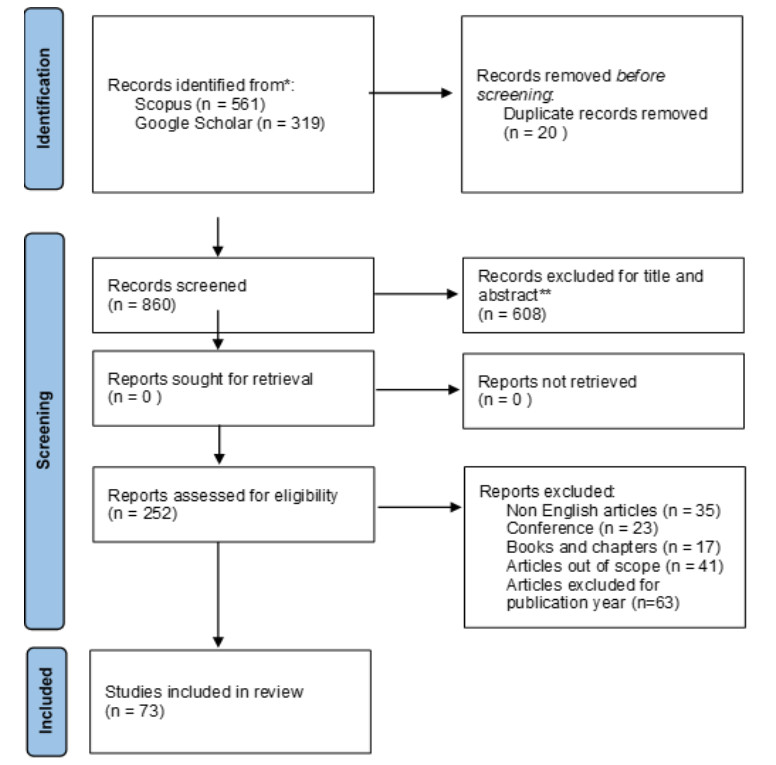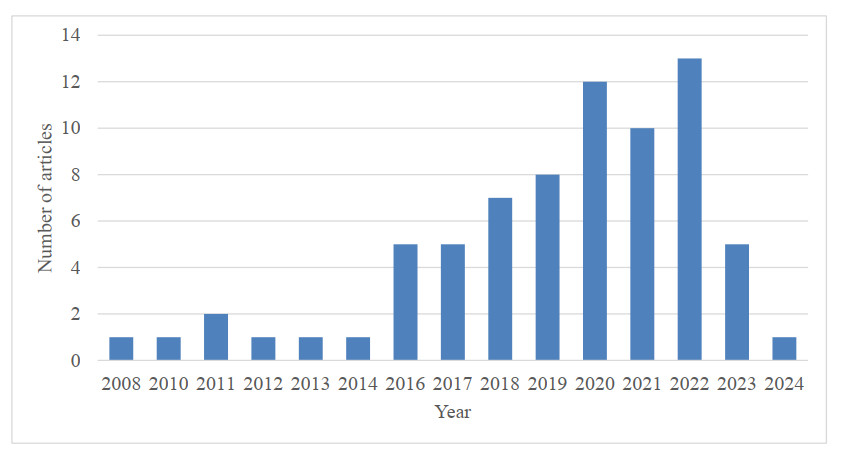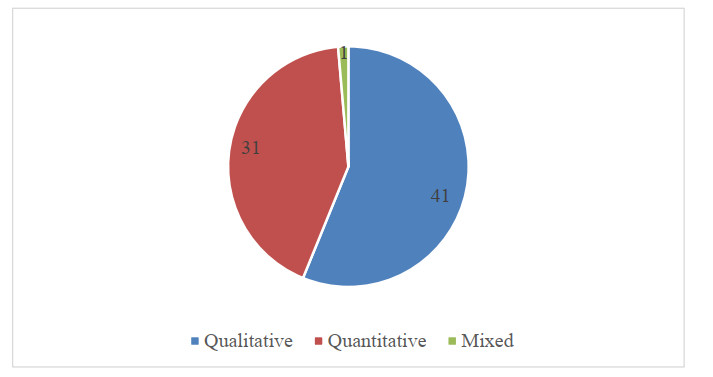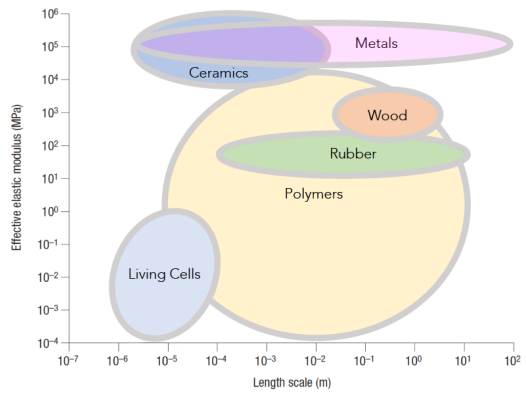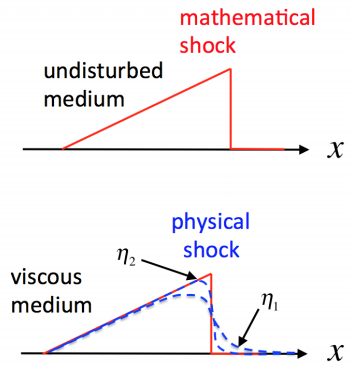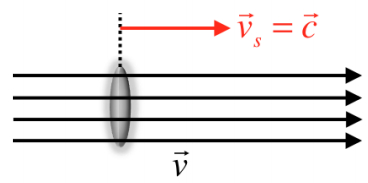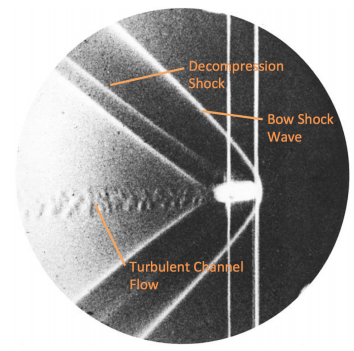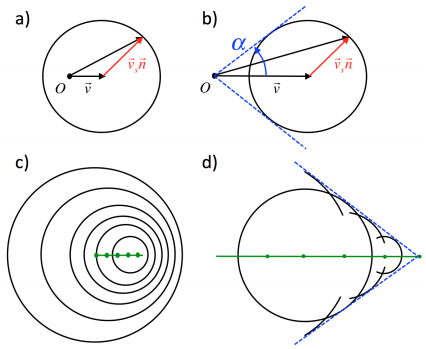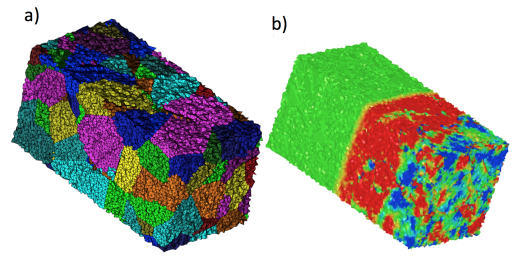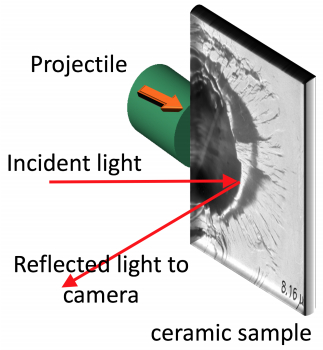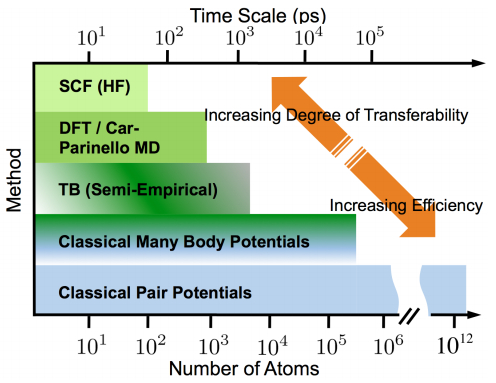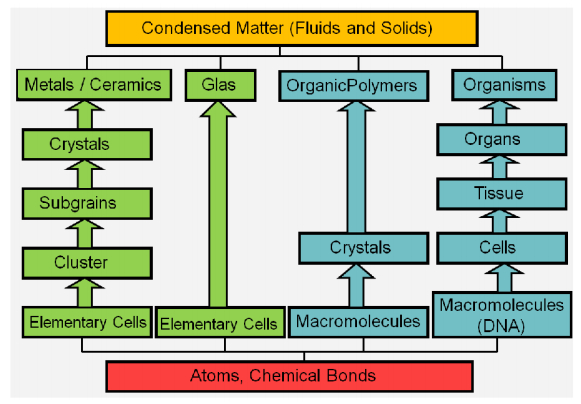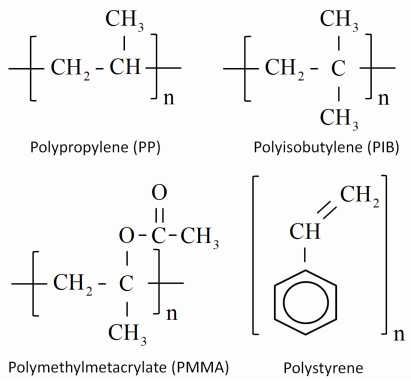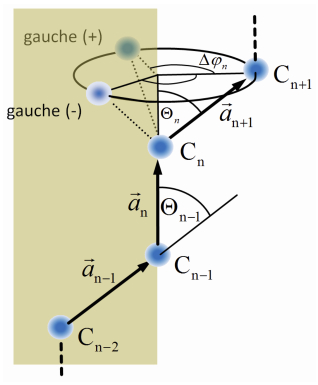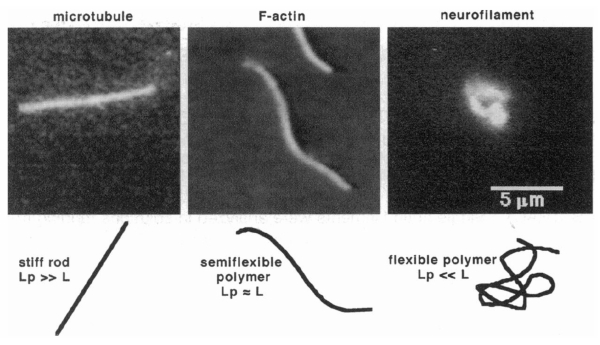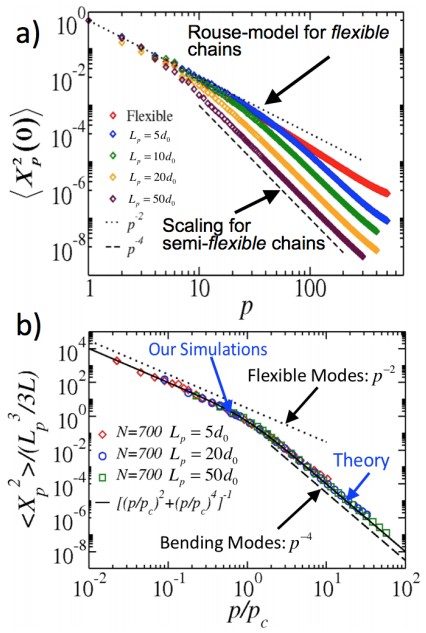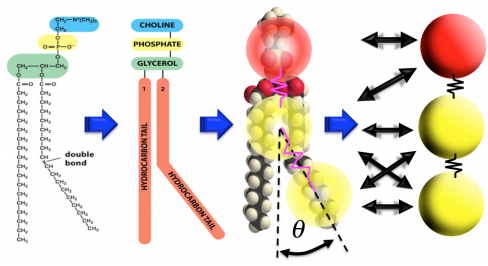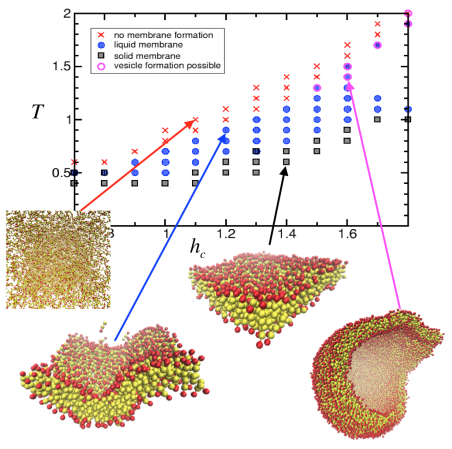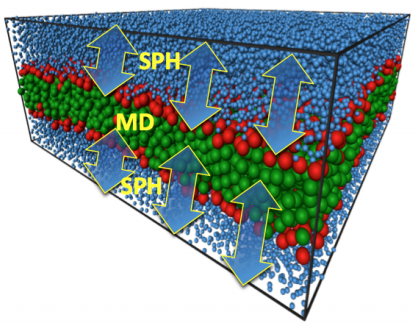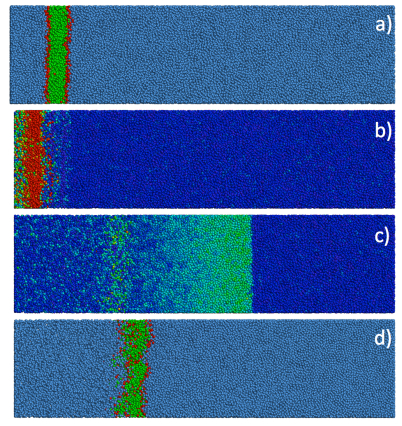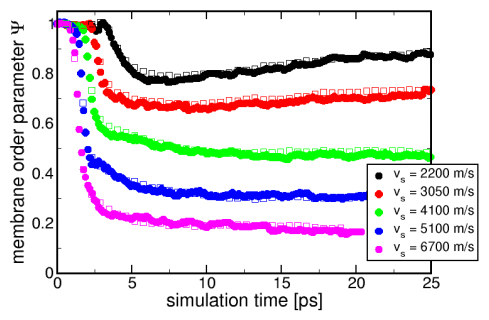My intention in this review article is to briefly discuss several major topics of presentday computational materials science in order to show their importance for state-of-the-art materials modeling and computer simulation. The topics I discuss are multiscale modeling approaches for hierarchical systems such as biological macromolecules and related coarse-graining techniques, which provide an efficient means to investigate systems on the mesoscale, and shock wave physics which has many important and interesting multi- and interdisciplinary applications in research areas where physics, biology, chemistry, computer science, medicine and even engineering meet. In fact, recently, as a new emerging field, the use of coarse-grained approaches for the simulation of biological macromolecules such as lipids and bilayer membranes and the investigation of their interaction with shock waves has become very popular. This emerging area of research may contribute not only to an improved understanding of the microscopic details of molecular self-assembly but may also lead to enhanced medical tumor treatments which are based on the destructive effects of High Intensity Focused Ultrasound (HIFU) or shock waves when interacting with biological cells and tissue; these are treatments which have been used in medicine for many years, but which are not well understood from a fundamental physical point of view.
1.
Introduction
Fighting hunger and poverty and ensuring sustainable agriculture and food security is a major global issue. Future food security is a major concern, especially as the world's population grows. Studies show that the world's population will grow to more than 10 billion people by 2050, a significant increase of 34% [1]. This population growth brings socioeconomic impacts and challenges related to food production, supply, and security that require further studies. Recognizing the many factors contributing to increased hunger and malnutrition is important. By 2050, feeding a larger, urbanized population will require 60%–70% of global food production [2]. In the future, there will be increased pressure to utilize natural resources for food production efficiently. Soil, water, and air are resources that need sustainable management. However, around 25% of arable land is deemed unproductive and unfit for agriculture due to soil mismanagement, degradation, climate change, urbanization, and industrialization [3]. Nonetheless, crop and animal production remain essential for food security.
Some literature has long acknowledged the importance of urban and rural agriculture to human health and well-being [4,5,6]. The Coronavirus disease (COVID-19) epidemic highlighted the critical role that access to nature plays daily [7,8]. The demand for stay-at-home recommendations due to COVID-19 has resulted in social distancing and restriction of movement, disrupted farming activities, and a sharp rise in the use of parks and gardens. These spaces have the potential to significantly contribute to community resilience to future environmental, health, or economic challenges, as well as recovery from food insecurity posed by COVID-19, given the widespread recognition of their value [9,10,11].
A positive outcome of the COVID-19 pandemic has been an increased emphasis on the aspects of life—including values—that have the most significance for individuals. Underlying value dilemmas have emerged due to the epidemic, prompting criticism from certain societal segments and highlighting the urgent need to address this crisis to meet global challenges. The global food system is a value-laden domain where we all seek security and stability [12]. The most recent issue that led to a rise in urban farming and gardening was the COVID-19 epidemic. Pandemic-related problems led to an increase in local food production, including early shortages in supermarkets [13,14], concerns about the pandemic's potential effects on commercial food systems [15], and free time from working from home and furloughs [16].
Urban agriculture has undoubtedly proven beneficial to mental health during the lockdowns, relieving social isolation and improving the mood and sense of community. Lades et al. [17] discovered that time spent outdoors was associated with markedly raised positive emotional effects and reduced negative emotions for a sample in Ireland in March 2020. Gardening was one of five outdoor activities related to the most significant benefits. One of the main reasons people got involved in urban agriculture was the potential for gardens to support health and well-being. Some adopted urban agriculture to relieve stress and support mental health [18]. Corley et al. [19] and Sunga & Advincula [20] discovered that time spent in a garden improved physical, emotional, and mental health. Bu et al. [21] observed that gardening improved mental health and well-being during the UK's March–May lockdown period. According to Pouso et al. [22], who employed an online poll across nine countries, the lockdown had a major negative influence on people's mental health, but access to outdoor space helped them deal with these effects. An online indoor micro-gardening initiative that offered users in China social and emotional support throughout the epidemic was described by Wang et al. [23].
The opportunity to raise fresh food for domestic use was a major driving force behind urban agriculture. Before COVID-19, metropolitan areas were finding it challenging to meet the rising demand from growing populations [24]. The pandemic also brought to light the vulnerability of supply networks and the effect that labour shortages had on harvests and food processing [25]. It reaffirmed the idea that urban fresh produce farming with shorter supply chains might help to create a local supply chain that is more robust and sustainable [26]. For individual families, having access to fruits and vegetables helped to lessen food shortages brought on by early pandemic consumer hoarding. Growing food was also considered a way to help the growing number of households experiencing food insecurity due to the pandemic's economic effects. During lockdown, gardeners from racially and ethnically diverse groups used their growing spaces to produce foods acceptable for their culture despite supply chain disruptions [27].
Soilless farming is a method of growing crops without using soil, either in a solid media culture or a water culture, where the plants are artificially given nutrients to support their growth and development. Being a controlled system, soilless farming also allows for the management of various pressures, both biotic and abiotic. This strategy has several socioeconomic benefits in addition to the ability to address the growing global food crises, malnutrition, and the effective use and management of natural resources, all of which contribute to preserving ecological sustainability and the year-round availability of a sufficient and hygienic food supply. It is an excellent crop-growing strategy for all countries with limited farmland, a constantly shifting climate, and developing food insecurity issues with their indigenous populations [28].
While reducing the difficulties associated with soil, soilless culture could likely function as a beneficial cropping system to address the current and future scarcity of arable land and water in surrounding cities [29]. Crop yield and quality are generally increased by soilless cultivation. Additionally, it prevents soil culture problems like soil-limited arable land that subsequently fails to meet the needs of the current human population [30]. It has been noted that using additional spaces for crop production for urban horticulture, in particular, increases overall food production through soilless culture [31].
The Food and Agriculture Organization of the United Nations Organization (FAO) has defined food security as ensuring that all people have physical, social, and economic access to sufficient, safe, and nutritious food that meets their dietary needs for an active and healthy life [32]. The availability of food stocks in desired quantities is critical to food security, relying on transportation, storage infrastructure, and market integration [33]. The FAO and the World Bank have prioritized eradicating hunger and poverty as international goals, with a target deadline of 2015 [34]. Consequently, re-awakening the need for urban agriculture, which has emerged as a concept to supplement the disruption in the food supply chain, is necessary.
The COVID-19 pandemic has aggravated food insecurity in urban centres because of the disruption in the food supply chain, aggravation of the physical and economic barriers that restrict access to food, and the catastrophic increase in food waste because of labour shortages. Thus, there is a need to adopt more resilient food production systems, reduce food waste, and strengthen local food production. Enhancing availability at the household and community levels through home gardening and urban agriculture is an important strategy [25]. Urban agriculture has a role in addressing urban food insecurity issues, which will only become more relevant with the secular trend of poverty and population urbanization in developing countries. Food security, poverty reduction, and economic growth are intertwined and reliant on agricultural advancements, requiring strategies that concentrate on helping small-scale farmers' food production and incomes, most notably the urban people with limited land access [35]. Consequently, urban agriculture remains a technique that city dwellers continue to use in their search for long-term food stability. Food security will not be wholly realized until adequate steps are implemented to assist urban farmers in getting the most out of urban agriculture [36]. The main objective is to give a comprehensive account of the importance of urban agriculture, specifically using soilless farming techniques by systematically reviewing various emerging planting systems to meet the needs of people living in urban areas and ensure food security and environmental protection. Furthermore, this review aims to determine different conventional, advanced, and modern soilless farming techniques to grow sustainable agriculture and food security. This review was carried out to draw together the information currently in the literature to address these questions:
ⅰ. What is the role of urban agriculture in ensuring food security in the post-pandemic era?
ⅱ. What are the key soilless systems and their effectiveness on sustainable urban agriculture?
ⅲ. What are the most important soilless technology techniques for food security?
ⅳ. What are the comparative advantages and disadvantages of soilless technologies in promoting sustainable agriculture?
2.
Materials and methods
Using the PRISMA technique, a thorough evaluation of the literature on urban agriculture after the pandemic was carried out for the study. The review was carried out using the PRISMA declaration, which recommends conducting systematic reviews [37,38,39]. A defined and strict set of guidelines for performing systematic literature reviews is known as the PRISMA statement [40]. A systematic search approach was implemented to access scholarly articles regarding soilless farming techniques for sustainable urban agriculture. This involved selecting a suitable database, utilizing specific keywords for the search, collecting relevant reference materials, and conducting content analysis. The findings of the review were subsequently conveyed through the use of descriptive statistics.
2.1. Identification
The identification process increases the importance of the keywords chosen because it increases the possibility of finding more relevant articles for the review [41,42]. We chose the methodology for the literature study because it enables lucid and transparent systematic reviews. The Scopus database and Google Scholar search engine were utilized to obtain 78 English-language papers published between 2008 and 2024. Conference papers and academic papers published in peer-reviewed journals were chosen using a specific search technique based on a PICO (Problem, Intervention, Comparison, and Outcome) approach [43]. The information on urban agriculture and sustainable cropping systems laid the foundation for the search strategy. The search utilized a combination of keywords such as "alternative cropping system", "urban agriculture", "urban farming", "post-pandemic", "post COVID-19 pandemic", "soilless technology", "urban gardening", "urban farming", "backyard farming", "sustainable, cropping system", and "sustainable agriculture".
2.2. Inclusion criteria
Articles that were conference papers, books, non-English articles, or duplicates were excluded from the final selection. Articles that met the inclusion criteria at various stages were considered for analysis. The methodology, results, and discussion sections were carefully reviewed to determine their suitability in addressing the research questions. This represented a total of 78 articles. Only articles published between 2008 and 2024 were considered for inclusion. Academic publications published in peer-reviewed journals were chosen as they undergo a rigorous review procedure by subject matter experts. This procedure guarantees that the study techniques and results adhere to scholarly requirements [44].
2.3. Eligibility and inclusion stage
The detailed analysis of the 119 articles that passed the initial screening phase thoroughly examined their abstracts, primary features, and outcomes. This review concentrates explicitly on soilless farming techniques and post-pandemic food security. Consequently, no studies diverging from this theme were included, leading to the exclusion of 41 articles. The remaining 78 articles met all the inclusion criteria and were incorporated into this analysis. The PRISMA flowchart utilized in this systematic review is depicted in Figure 1.
3.
Results and discussion
3.1. Descriptive analysis of findings
The initial articles subjected to review were released in 2008, and throughout the period spanning 2008–2024, only 2009 and 2015 required more published papers. Notably, there was a notable surge in publications from 2008 to 2022, as illustrated in Figure 2. Among these years, 2022 emerged as the most prolific, boasting 13 articles, closely trailed by 2020 with 12 articles. This heightened publication trend could be attributed to the prevalence of research topics focusing on sustainable urban agriculture in the post-pandemic context.
The research methodology used in the reviewed articles was also examined. Scrutinizing the methodology provides valuable insights into how various research questions were approached. The reviewed articles employed multiple methods, including quantitative, qualitative, and a combination of both, known as mixed methods. Figure 3 illustrates the distribution of articles based on their chosen methodology. Notably, most of the reviewed articles favoured using qualitative methods, totalling 41 articles. Closely following, a quantitative methodology was employed in 31 articles, while only one article utilized the mixed methods approach.
Following the initial evaluation of the examined articles, six significant themes emerged. These thematic areas comprised the role of urban agriculture, soilless farming technology, water management, hydroponics, aquaponics, and aeroponics. These identified themes serve as the foundation for our subsequent discussion.
3.2. Role of urban agriculture in post-pandemic
Urban farming and soilless techniques are vital, addressing challenges and aiding sustainable food systems in the post-pandemic period. A Tokyo study by Iida et al. [45] shows that urban agriculture was linked to well-being, physical activity, and food security during COVID-19. Access to local food, from self-cultivation to direct sales, relates significantly to health. Allotment farms outperform parks in well-being and surpass food retailers in addressing food security. In walkable areas, urban farming enhances outdoor activities for communities, benefiting health. It also boosts food system resilience by providing local food during global disruptions. According to Lal [25], urban food production includes vertical farming, interior and rooftop gardens, small-scale home farming, and local community gardens. During and after the COVID-19 pandemic, home gardening can significantly improve food and nutritional security while bolstering several ecological services (i.e., plant biodiversity, microclimate, water runoff, water quality, and human health). There is no doubt that home gardening has a positive impact on people's physical, emotional, and social well-being [46] and is important in lowering household food expenses [47].
Colson-Fearon & Versey [48] conducted a thorough qualitative interview in Baltimore, USA, with 15 community stakeholders. According to the study, urban farming is essential for environmental and community sustainability. The respondents discussed sustainability in general terms: growing food responsibly (i.e., causing the least damage to natural resources) and utilizing farming's advantages for the environment. Awasom [49] concluded that urban food gardens offer wholesome, fresh food that reduces hunger and enhances the health and welfare of the neighborhood—plus, any extra product may be sold to generate additional revenue. In addition to lowering carbon emissions and improving urban environmental quality, food gardens are valuable hubs for networking, community building, and empowerment.
In Zulfiqar et al. [50], the aspects of urban agriculture that may be connected to Pakistani urban inhabitants' food security were examined. The study concluded that factors influencing urban agriculture, which improves food security, include the availability of resources and the desire of urban residents for fresh food. According to the analysis by Ilieva et al. [51], there has been an increase in research on the social effects of gardens and farms. Most of these studies have focused on how these spaces affect community cohesion and engagement. Other findings include higher consumption and availability of fruits and vegetables, which are linked to improved health and decreased food insecurity.
The study by Steenkamp et al. [52] is a significant discovery from this review that may address the function of soilless technology and urban agriculture in guaranteeing food security. Using a multiple-case study approach, the research examined four Global South best practice examples of urban agriculture to identify its potential to mitigate risks related to food security and support sustainable development goals. Based on the results, there is potential to use urban agriculture's multifunctionality to address other urban concerns, including unemployment, community decline, and food deserts, in addition to enhancing the food security of the most vulnerable populations. The study also demonstrated how urban agriculture can help achieve goals related to sustainable development.
One practically realistic solution to address the growing food demand of cities is through vertical farming, where not only do pesticides disappear, but there are also almost no nutrient emissions. Considering that a kilogram of product requires only 2–4 L of water on average, this may save enormous quantities. Vertical techniques generate less waste and require less space and resources for product distribution. Furthermore, the controlled environment of an indoor farm guarantees consistently high production volumes with consistent quality every day of the year, regardless of weather, climate change, or location, in addition to allowing for a significant improvement in quality (taste, flavour, appearance, shelf life, nutritional value, and safety) [53,54,55].
Zhang et al. [56] claimed that vertical farming uses land efficiently and is environmentally sustainable, contributing to world food security. Enhancements that would enable a better product to be produced while using less water and enhancing its safety would be possible when combined with film farming. Eaves & Eaves [57] conducted a cost-benefit analysis based on a hypothetical farm and found that for film farming integration to be feasible, a yield increase of 27,247 kg (43.57%) and a price point of $9.67/kg (26.90% increase) is required. A study on plants grown under water stress, comparable to what would be caused by film farming, revealed smaller leaves and lower plant yields but improved nutrient contents. The findings could indicate that integrating film farming into vertical farming is feasible since it can offer improvements in plant quality required to command a premium price or the required increase in yield [56].
According to de Bang et al. [58], one benefit of vertical farming is preventing growth deficits through ongoing monitoring. This enables the early identification of nutrient shortages and ongoing fertilization plan adjustment. This, in turn, necessitates a fundamental comprehension of how plant nutrients function and are transported, which frequently makes most nutritional deficits visually diagnosable.
In addition to providing a source of fresh produce, rooftop gardening supports the sustainability of urban environments and offers comprehensive ecosystem services. According to Thapa et al. [59], it is highly significant and contributes financially to soft advantages like food production, stormwater retention, air quality, and carbon sequestration.
3.3. Emerging soilless systems and their effectiveness on sustainable agriculture
As mentioned, soilless farming methods offer significant promise for securing food post-pandemic. We have specifically examined how these methods impact urban agriculture. This study focused on three key factors: environmental impact, efficient resource use, and water conservation. Table 3 displays articles that thoroughly analyzed how soilless technology affects urban agriculture using these criteria.
As indicated in Table 2, soilless methods offer various benefits, including positive effects on the environment, efficient use of resources, and water conservation. Hydroponics, for instance, has the potential to save 85%–90% of water [60,61,65]. Moreover, Gautam et al. [60] claimed that soilless media such as aeroponics saves up to 85%–90% of water, as it is recycled and provides better yield than conventional cultivation with almost zero environmental pollution. According to El-Kazzaz & El-Kazzaz [61], providing fertilizers in precise amounts tailored to plant needs contributes to the efficient use of resources in soilless technology. Additionally, soilless culture uses almost recycled fixed quantities of water and saves at least 90% of irrigated water. Most vegetable crops thrive and produce more in soilless agriculture than in conventional agriculture. Joshi et al. [64] discovered that soilless farming increases yields by precisely managing factors like nutrients, pH, oxygen, carbon dioxide, light, and temperature. This enhanced output can offset the initial and ongoing costs of soilless farming. Vegetables grown in soilless systems are high-quality and need minimal washing. According to Arumugam et al. [62], soilless farming using a closed-loop system offers significant benefits besides reclaiming arable land. It can recycle 85%–90% of irrigation water, resulting in improved space and water management and higher yields than traditional farming, showing promising global results.
The growing medium, pots, electricity use, raw material transportation, and product deliveries are the hydroponic system components with the most significant ecological effects, according to Martin & Molin [68]. Paper pots can be used instead of plastic ones, significantly reducing the use of fossil fuels and greenhouse gas emissions. The use of coconut fibre in place of traditional garden soil enables more ecologically friendly crop cultivation.
3.3.1. Water management for sustainable urban agriculture for food security
Other sectors compete for scarce water, including urban demands, the industrial sector, and the agricultural sector, which utilize more than two-thirds of all freshwater globally [69]. In the United States, more than 85% of the nation's total freshwater consumption is used by the agricultural sector, making it the largest consumer of water in the country [70]. One of the major agricultural problems is the need for freshwater [71].
Urban agriculture has a huge potential to produce 100–180 million tons of food yearly while offering a variety of ecological benefits. Additionally, it might help prevent stormwater runoff, save energy, and sequester nitrogen. Urban agriculture could produce economic benefits worth up to $160 billion annually under high-intensity urban agriculture worldwide [72]. Water competition between urban and agricultural usage results from rising urban water demand, mainly sharing a local water supply source [73]. Therefore, efforts are required to ensure sustainable water use, such as maximizing water use and water treatment, implementing a circular water economy in agriculture, and reducing the adverse effects of climate change on water resources. This could be achieved by exploring innovative agricultural production technologies.
3.4. Soilless technology techniques for food security
This study identified three crucial soilless technologies: hydroponics, aquaponics, and aeroponics. These technologies have the potential to contribute to and ensure sustainable food security. The subsequent section will delve into their significance and emerging trends.
3.4.1. Hydroponics
In worldwide food production, hydroponic growing systems present a chance to complement, if not completely replace, traditional soil-based growth systems. Some advantages of hydroponic growing systems include the capacity to adjust circumstances to maximum production in limited space, the limiting of water waste (recirculation), and crops grown in controlled environments (regulation of pests, nutrients, and qualities essential for optimal plant growth) (vertical gardens) [74]. Sardare & Admane [75] claim that because the worldwide urban concrete conglomerate is expanding daily, there is no other choice but to use agricultural methods like hydroponics, which will increase the produce's output and quality and assist secure food security on a global scale. According to Rani et al. [76], soil-based agriculture currently suffers from low yield and quality because of factors like urbanization, climate change, natural catastrophes, and the careless use of pesticides and herbicides, all decreasing land fertility. Thus, because hydroponic farming produces high-quality food and manages resources well, it is becoming increasingly popular worldwide.
Sharma et al. [77] emphasized numerous advantages associated with hydroponic systems, such as quicker crop growth than traditional methods, year-round production, minimal susceptibility to diseases and pests, and eliminating tasks like weeding, spraying, and watering. They concluded that the nutrient film technique (NFT) has been utilized globally to cultivate leafy greens and other vegetables, resulting in water savings ranging from 70% to 90%. Countries noteworthy in hydroponic technology include the Netherlands, Australia, France, England, Israel, Canada, and the USA. The successful adoption of commercial hydroponic technology necessitates the development of cost-effective, easy-to-operate and maintain techniques, requiring less labour and lower overall setup and operational costs, according to the investigation by Velazquez-Gonzalez et al. [78] on using hydroponics in small-scale urban farming. The study found that hydroponics is versatile and customizable for personal and small businesses. Technological advances, like automation and data processing, enhance urban agriculture's efficiency, resource management, and productivity.
Recent advancements in hydroponics involve merging hydroponics with smart technology in farming. According to Rajaseger et al. [79], this novel system shows promise for efficient and eco-friendly crop production. It eliminates the need for soil, reduces water usage by delivering nutrients directly to plant roots, and utilizes smart farming techniques with IoT, sensors, and automation. This technology monitors soil conditions, nutrient levels, and plant vitality, allowing precise management and optimization. The tech-driven approach enhances crop yield, accelerates growth rates, and maintains ideal conditions year-round, regardless of weather or other environmental factors. Smart farming also reduces reliance on organic chemicals, promotes eco-friendly pest management, and minimizes waste. This innovative strategy has the potential to revolutionize agriculture, encouraging localized food production, improving food security, and fostering more resilient farming practices. Recently, mainstream adoption has seen the integration of innovative technologies like smart home tech (domotics), IoT automated growing methods, and AI-based systems in indoor hydroponic setups [80].
Rajaseger et al. [79] divided hydroponic systems into soilless-solution culture and granular-substrate culture hydroponics. However, this study found that most articles identified five types of hydroponic systems [76,77,79]. Table 3 provides a brief description of these hydroponic types.
Sharma et al. [77] observed that a hydroponics system can cultivate various plants, crops, and vegetables. Finished goods' quality, flavour, and nutritional content are typically better than naturally soil-based agriculture. According to several experimental results, leafy greens (lettuce, spinach, parsley, celery, and Atriplex, among others) can be successfully cultivated in hydroponic systems. Due to their faster growth and capacity for nitrogen uptake, lettuce and spinach are the most promising species to be grown in integrated hydroponics and aquaculture systems. As indicated in Table 4, [77] and [79] investigated various crop varieties that might be cultivated hydroponically.
Plants need a growing medium to support their roots, providing structure and oxygen. Various hydroponic systems use different growing media with unique qualities. Examples include sand, brick shards, vermiculite, perlite, gravel, rock wool, sawdust, and polyethene sheeting [81]. Growing plants without soil allows researchers to explore alternative media. There are numerous options, such as rockwool, perlite, coco peat, and sand. Each has pros and cons, and the choice depends on factors like porosity, water retention, and cation exchange capacity [82].
The study [82] displayed the average percentage of various vegetable crops hydroponically grown under various substrate media, with sand substrate serving as a control. Perlite is the ideal medium or substrate. The research results are displayed in Table 5.
3.4.2. Aquaponics
Aquaponics is a growing way to produce food that combines fish farming and hydroponic plant growth. It combines aquaculture and hydroponics, creating a new approach to traditional fish farming. These systems use closed-loop water systems where fish and plants grow together, which could help address environmental issues linked to regular fish farming and agriculture. The plants absorb essential nutrients (N and P) from fish metabolism and bacterial activity [83]. Reusing water can reduce environmental impact by using less water. While common soil pollutants do not affect crops in these systems, there are concerns about different contamination types, like the spread of diseases through fish waste in water. Challenges arise in combining fish and crop growth due to variations in growth rates, nitrogen uptake efficiency, costs, and energy needs [84].
A method to reduce the environmental impact of food production, the distance food travels, and the ensuing food, energy, and water implications that will be needed to support the world's expanding urban population is through aquaponics protein and plant production. The technology could be applied to small-scale farming in low-income nations, industrial-scale production in rural areas, commercial or community-based urban food production, educational institutions, and architectural beautification projects [85]. Even though aquaponics food production is projected to feed a growing worldwide population, several environmental concerns should be carefully considered before deciding if aquaponics is a game-changing technology for sustainability. Simultaneously, the environment is sufficiently maintained [86].
According to Maucieri et al. [87], aquaponics systems can be grouped based on how nutrients reach plant roots. Two main groups are 1) systems without substrate, like NFT and floating raft systems, and 2) medium-based systems using the substrate for root anchorage and microorganisms. In addition, aquaponics can also be classified by hydroponic beds, including media-based grow bed (MGB), deep-water culture (DWC) with floating rafts, and NFT using a channel with streaming water. Their study suggests that DWC and NFT are good options for large-scale commercial adoption [88].
According to Gosh & Chowdhury [88], the selection of plant species adapted to hydroponic culture in aquaponic greenhouses is related to the stocking density of fish tanks and subsequent nutrient concentration of aquacultural effluent. Lettuce, herbs, and especially greens (spinach, chives, basil, and watercress) have low-to-medium nutritional requirements and are well adapted to aquaponics systems. Plants yielding fruit (tomatoes, bell peppers, and cucumbers) have a higher nutritional demand and perform better in a heavily stocked, well-established aquaponic system. Greenhouse varieties of tomatoes are better adapted to low light and high humidity conditions in greenhouses than field varieties.
3.4.3. Aeroponics
Aeroponics is a method in which plant roots hang in a sealed container, receiving nutrient-rich water mist from sprayers. The plant's upper part stays above the mist zone. Using pressure nozzles, this setup encourages rapid growth in controlled conditions [89].
According to the study of Lakhiar et al. [90], air-growing culture reduced damage and promoted significant growth compared to soil, sand, or aerated water culture. The atomization spray in aeroponics allows for measuring nutrient absorption over time and under various conditions. In this system, plant roots hang in a plastic holder with foam instead of soil under controlled conditions. Roots dangle freely in the air, receiving nutrient-rich water through atomization nozzles, intermittently or continuously creating a mist of different droplet sizes.
The primary discoveries from this examination indicate that, based on the research conducted by [91,92,93], aeroponics emerges as an effective system for cultivating potatoes. Aeroponics is a soilless farming method for areas with poor soil and water conditions. In this system, plant roots hang in the air, supported by foam or plastic, and nutrient solution is sprayed through nozzles. This review explores aeroponics to enhance potato farming in developing nations [91]. Moreover, Chiipanthenga et al. [93] discovered that traditional methods for producing potato seeds are ineffective in preventing pathogen buildup, resulting in lower-quality seeds and poor crop yields. In contrast, using aeroponics for meristem culture and tuberization quickly produces high-quality, pathogen-free potato seeds. Aeroponic multiplication of these seeds complements tissue culture (micropropagation) by rapidly cloning mini tubers, reducing labour steps when transferring plantlets from tissue culture to the field after the flask stage.
Aeroponics grows veggies without soil. Roots hang in containers with nutrient mist, ensuring optimal oxygen and moisture. This method boosts plant nutrition absorption and accelerates plant growth. Aeroponic systems are easy to use; plants are separated and suspended, making harvest straightforward. Vegetables like potatoes, yams, tomatoes, lettuce, and leafy greens are commercially grown using aeroponics [94]. Aeroponics works well commercially for growing crops like potatoes, tomatoes, lettuce, and ginger—however, more knowledge about using aeroponics for staple foods such as rice is needed. Understanding genetics, nutrition, and technology challenges is crucial for future large-scale food production [95].
Garzón et al. [96] analyzed the incorporation of advanced technologies in aeroponics. The research highlights that sensing technology and Industry 4.0 are the predominant technologies in aeroponics, offering various advantages such as enhanced sustainability and time efficiency. According to Kumari and Kumar [97], there are two types of aeroponic systems: low-pressure units and high-pressure devices. In low-pressure systems, plant roots hang above a nutrient solution reservoir or channel that a pump supplies through jets or ultrasonic transducers. Due to cost, these units lack purification features and are suitable for small-scale growth or demonstrations. High-pressure devices use mist generated by high-pressure pumps and are typically employed for high-value crop cultivation. This method integrates air and water purification technologies, nutrient sterilization, low-mass polymers, and pressurized nutrient delivery systems.
3.5. Key findings on soilless technology
To delve deeper into the potential of soilless technologies emerging trends in crop cultivation in fostering sustainable urban agriculture and serving as a pivotal element in ensuring food security post-pandemic, this study further investigates critical findings related to these techniques. Given the dynamic nature and non-uniformity of results in articles, the study identifies key factors such as the type of soilless technique, the media/substrate utilized, the crop studied, and the research outcomes. Additionally, the articles are categorized based on their contributions to sustainable urban agriculture, focusing on aspects like environmental impact, resource efficiency, yield productivity, and water conservation. Table 6 provides an overview of the articles reviewed in this section.
Oladimeji et al. [108] tested agricultural wastes (palm kernel shells and Periwinkle shells) as growth beds for pumpkin plants. The study also tried gravel and a mix of gravel with shells. Results showed better pumpkin growth in the shell media, with improved vine length, leaf area, number of leaves, branches, and biweekly yield. The gravel substrate performed the worst. Water quality and nitrogen reduction across the system and different grow beds indicated that mixing all substrates improved water quality for fish and plant growth. Ferrini et al. [110] examined bioactives in C. sativa root extracts—β-sitosterol, stigmasterol, campesterol, friedelin, and epi-friedelanol. They used aeroponic (AP) and aeroponic-elicited cultures (AEP), comparing them to soil-cultivated plants (SP). AP and AEP significantly increased root growth and boosted bioactive molecules (up to 20-fold for β-sitosterol). Aeroponics, an easy and contaminant-free technique, enhances root harvesting, producing more secondary bioactive for health-related products.
Vera-Puerto et al. [111] evaluated the use of treated wastewater for growing cut flowers using aeroponics in arid climates. The results revealed that aeroponics used 10%–20% less water to produce Lily Tresor than other cultivation systems, demonstrating efficient water use by aeroponics. Other studies in this review also examined how soilless technologies affect the environment and support sustainable urban farming for food security. A survey by Dannehl et al. [102] explored a hybrid aeroponic/nutrient film technique (AP/NFT) system for growing greenhouse tomatoes. The plants in this system were more compact and accumulated more Na+ but less P and S than those grown in rock wool. Various plant parameters showed no significant differences. The AP/NFT system seemed viable for greenhouse tomato production, reducing the environmental impact by decreasing the use of rock wool.
Rufí-Salís et al. [103] analyzed three nutrient recovery methods for urban hydroponics—direct leachate recirculation (DLR), chemical precipitation (CP), and membrane filtration (MF). They assessed the environmental performance using a life cycle approach, focusing on recovering phosphorus (P), magnesium, potassium, and calcium in hydroponic tomato cultivation. Results showed that DLR was the most environmentally friendly option regarding global warming, with significantly lower impacts than CP and MF. All three alternatives had less eutrophication potential than the baseline scenario, which assumed P discharge into the environment. Using recovered nutrients met the crop's nutritional needs, saving 44%–52% of global warming impacts compared with new fertilizers, especially with DLR and MF. On the contrary, CP slightly increased global warming impact because it could only recover P and part of the magnesium.
3.5.1. Comparative advantages and disadvantages of different soilless technologies in promoting sustainable agriculture
According to Chen et al. [113], aquaponics and hydroponics have a comparative advantage with the same design. Aquaponics had 45% less environmental impact than hydroponics. Both systems were affected mainly by electricity use for heating, lighting, water pumping, fish feed, and fertilizer production. Switching from coal to wind power could make hydroponics eco-friendlier than aquaponics. Moreover, Fussy & Papenbrock [114] compared hydroponics and aquaponics, noting the challenge in comparison due to system differences. Aquaponics construction is more labour- and cost-intensive, with stages for fish wastewater treatment and habitat. Despite this, aquaponics has advantages like lower fertilizer costs. In aquaponics, pH and nitrogen levels are monitored less frequently due to natural balancing, showing better water-use efficiency. Aquaponics performed better regarding resource efficiency and environmental impact in the two studies.
According to AlShrouf [82], aeroponics and hydroponics use nutrient-rich water in distinct ways. Hydroponics uses a different medium (not soil) to give plants water with nutrients, while aeroponics uses a misting system. Aeroponics is efficient for vertical growing and space use. Both systems control quality, health, and quantity. Hydroponics uses only 10% of water compared to traditional methods. Aeroponics saves water, too, spraying nutrient-rich solution on roots for maximum nutrient absorption. Aeroponics needs constant monitoring, while hydroponics is user-friendly. Table 8 shows the comparisons between these soilless technologies by other authors.
4.
Conclusions and future recommendations
In today's era, innovative methods like vertical gardening, hydroponics, aeroponics, aquaponics, and rooftop gardening enhance urban farming systems such as indoor planting, community gardens, edible landscapes, and home gardens. These modern approaches ensure a steady supply of fresh produce to city neighbourhoods, bolstering food security while being eco-friendly and energy-efficient. Following the PRISMA guideline, a thorough review systematically analyzed existing literature on emerging urban farming techniques, particularly those utilizing soilless technology. The review identified three prominent soilless technologies: hydroponics, aeroponics, and aquaponics. Furthermore, it explored how other urban farming methods like vertical farming, urban gardening, and rooftops contribute to sustainable agriculture. Moreover, the review scrutinized articles on soilless technology, focusing on their environmental impact, resource efficiency, and water usage as criteria for sustainable agriculture. Notably, the findings underscored that urban agriculture, especially with soilless technology, can conserve up to 80%–90% of water, ensuring sustainability and bolstering food security, especially during pandemics. Additionally, the review examined various vegetables and crops suitable for cultivation using these techniques. However, further research is imperative with the ongoing expansion of soilless culture systems in greenhouses. Each cultivation method offers distinct advantages supporting urban agriculture and food security.
Use of AI tools declaration
The authors declare they have not used Artificial Intelligence (AI) tools in the creation of this article.
Acknowledgements
The authors thank Universiti Pendidikan Sultan Idris for the University Research Grants and their support during the manuscript's preparation.
Conflict of interest
The authors declare no conflict of interest.
Authors contributions
Monsuru Adekunle Salisu: Title, study design and writing; Yusuf Opeyemi Oyebamiji: Literature review and data collection; Omowunmi Kayode Ahmed: Wiring of methodology and figure and tables illustration; Noraziyah A Shamsudin: Proofreading and editing; Yusoff Siti Fairuz: Formatting of the manuscript; Oladosu Yusuff: Proofreading and editing; Mohd Rafii Yusop: Relevant literature search; Zulkefly Sulaiman: Proofreading and editing; Fatai Arolu: Technical check, reference check and final formatting.









 DownLoad:
DownLoad:
